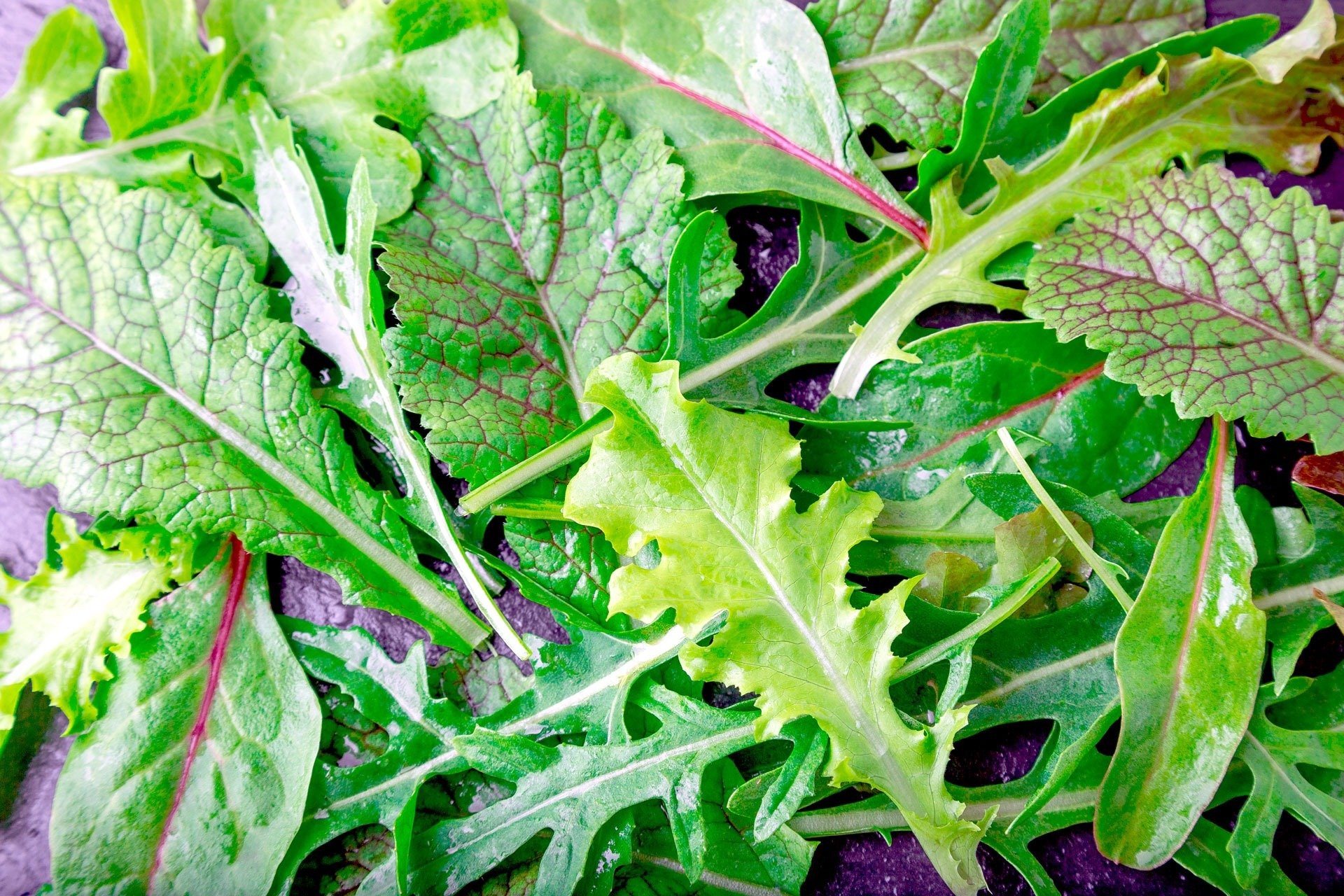Real Food Encyclopedia | Mâche
Mâche (Valerianella locusta) has a rags-to-riches background. It was first enjoyed as a humble weed that volunteered itself between row crops. It was a wild but edible plant that was foraged from the nearly barren fields of Europe in the spring, before the first crops were planted. The French, who still maintain a loyal dedication to the green, began cultivating it in the 17th century. Thomas Jefferson, a known Francophile, discovered the delightful plant on a trip there and brought seeds back to grow mâche at Monticello in the early 1800s.
Until recently, mâche lovers have had to grow their own or convince local farmers to plant a crop. These days, it’s not uncommon to find the tasty rosettes at the farmers’ market in early spring (where it is sometimes also sold as corn salad or lamb’s lettuce), or depending on the location, at some major supermarket chains.
Fun acts about mâche:
- Mâche love is powerful. Mâche, aka Rapunzel, was the delicious green in the fairy tale of the same name that tempted the pregnant peasant into pilfering the witch’s garden and was then forced to surrender her baby in return.
- Mâche is also known as “corn salad” because before it was cultivated, it grew as a weed between the rows of cereal crops such as corn, rye and wheat.
- Mâche is also known as lamb’s lettuce because the leaves’ resemblance to the shape of a lamb’s tongue. (Not to be confused with lamb’s quarters, a totally different green.)
- And it is also known as “doucette” in France, which translates as “little sweet one.”
- There are over 200 varieties of mâche that differ in flavor, texture and adaptability.
What to look for when buying mâche
Mâche grows in circular leaf configurations that are about three to six inches across. The leaves are dark green and tender.
When buying mâche, look for rosettes that are still intact, as they will keep longer than individual leaves. There should be no sign of yellowing or aging.
Sustainability of mâche
Environmental impact
Probably because mâche is planted so early in the season, before many pests are out of hibernation, it doesn’t require topical applications to thrive. While the plant enjoys soil that has been enriched with compost, it is not finicky and doesn’t need to be propped up with chemical amendments. The plant makes an excellent green manure and soil conditioner, particularly if turned under after harvest.
Seasonality
For the seasonal farmer, one of the best features of mâche is its frost tolerance. The plant is so hardy that it can even be harvested frozen. That means it can be grown in the earliest part of the season before other greens would whither in the chill, bringing a fresh blast of green to the early spring table.
Mâche is cold loving and must be planted in cool temperatures as the seeds go dormant in warm soil. But it will continue to flourish until temperatures reach the 80s. And, unlike other greens, mâche doesn’t get bitter as the plant ages so it can be harvested continuously until hot weather sets in.
Cultivation
Mâche is not hard to grow. In fact, left to bolt, it will self-seed and volunteer annually. It grows in sun and even light shade. Mâche grows very low to the ground in three to six inch rosettes of leaves that sprout from very fine stems. It is harvested most commonly by slicing the plant off at its base or just below the soil line to keep the rosette intact, leaving the root in the ground. It can also be harvested by pulling a few leaves from the plant at a time in a cut-and-come-again fashion.
Because it grows so low to the ground, mâche is most often hand-harvested which can drive up cost and keeps it from playing a larger role in commercial production. And its low growing ways also mean that it is often quite sandy and requires thorough washing to get the vegetable table ready.
Because of its compact size, many growers adopt mâche for their hydroponic systems. However, without the rigor of surviving in the elements, the leaves of such plants never develop the thick juicy bite that is characteristic of field grown plants.
Eating mâche
Storing
Fresh mâche keeps for up to two weeks if loosely wrapped in a reusable plastic bag and refrigerated.
Cooking
Mâche is most frequently featured in salads. Its mild flavor makes it a great companion with spicier greens such as arugula or served simply dressed on its own. In France, it is tossed with beets and walnuts. You can also use it in soups. Its mild flavor would fold into a smoothie unnoticeably.
Nutrition
For a tiny plant, mâche packs a big nutritional punch. They are high in Vitamins C, A, and B-6. They are a good source of iron, potassium and copper and are packed with beta-carotene and omega 3s, making them one of the most nutritious lettuces available.
Top photo by coco/Adobe Stock.

